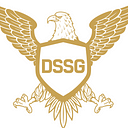At workplaces, humour is serious business
It’s been a really serious and sobering year-and-a-half for all of us collectively. The pandemic and its resultant economic turmoil, socio-political strife, and the constant doom-and-gloom of the media have (understandably) wiped the smiles off a lot of people’s faces.
This is a matter of concern because the research seems to indicate that laughter is actually serious business!
Laughter has been shown to boost engagement and productivity at work. This isn’t surprising, as there is a wealth of literature that has demonstrated how laughter relieves stress, boosts well-being and offers benefits to both physical and mental health.
And it’s not just that. Humour can assist us when it comes to better negotiation outcomes, when it comes to problem-solving & creative thinking and much more. Humour also appears to be important when it comes to leaders — making them more motivating and admired, and helping their employees feel more engaged
Okay, so humour at work is clearly no joke! But how can you leverage this understanding and bring humour into your workplace? Here are a few initial thoughts.
Build upon naturally funny moments.
We all end up being funny sometimes, and we can use these natural moments of levity as comedic springboards. If you or someone you’re interacting with says something funny, you can double-down on this by making the initial premise more absurd.
Use call-backs
This means referencing a moment that already got a laugh. For instance, if on a video call you notice a moment of laughter (e.g., one employee was distracted by a particularly noisy neighbour), you can reference that in a follow-up message you write them (e.g., “I hope your neighbour is doing a better job at fulfilling their neighbourly duties today!”).
Create fresh jokes — using comedic similes and metaphors.
An easy way to do this is by drawing a connection or parallel between two unrelated areas, and this combination is what is funny. For instance, if you are a co-trainer or a co-facilitator for a training session and you notice how your co-facilitator led through a difficult part of a session skillfully without your help, you could say “I felt like I was a member of the royal family at a parade — I only had to smile, nod and wave!” When drawing these comparisons, often the more specific your comparison is, the more humourous it can be
In the closest and strongest of work relationships, there may occasionally be a space for some light, playful teasing. When doing this, it is best to poke fun about topics that the other person is not insecure about, or that they regard as strengths.
Tied to this is another caveat: make sure you’re tailoring your humour to your specific audience. It’s better to reserve jokes and humour for stronger work relationships, especially if you’re not comfortable being humourous at work. As mentioned above, jokes that elevate others are often the safest. Use cues to determine your joke isn’t being taken the wrong way, and always err on the side of safety.
So, what contexts and situations can you apply humour in?
- Use it to create a friendlier environment.
- Use it to defuse difficult situations and bust stress
- Use it to find the funny side of things that go wrong at work
Laughter and levity can also be built into the culture of an organisation to some extent. For example, Yahoo and IBM have many names like Kajagoogoo for their meeting rooms. The streaming platform Hulu hosts taco-eating contests and Airzooka tournaments for its employees.
In conclusion, look at having a good laugh with your colleagues not as a detractor of high-quality work, but as a facilitator of it. Humour needs to be taken more seriously!
